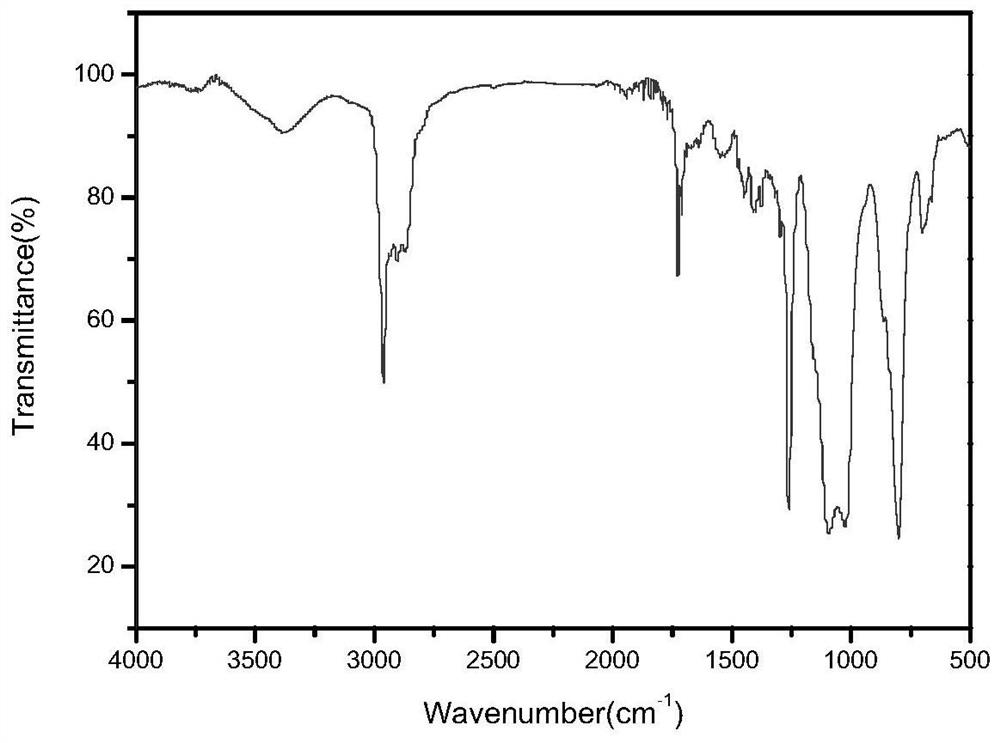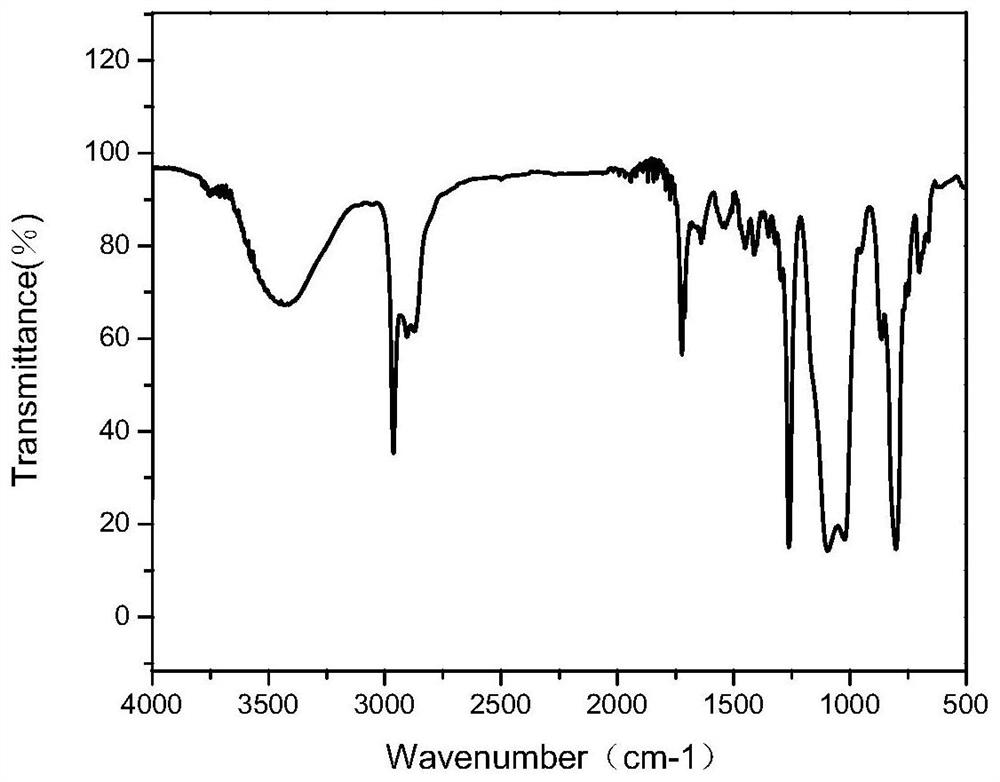Silicone hydrogel with high oxygen permeability and corneal contact lens
A silicon hydrogel, silicon monomer technology, applied in glasses/goggles, instruments, optics, etc., can solve problems such as limited addition, damage to network structure, and impact on lens wearing comfort.
- Summary
- Abstract
- Description
- Claims
- Application Information
AI Technical Summary
Problems solved by technology
Method used
Image
Examples
Embodiment 1
[0097] Preparation of Monoblocked Organosiloxane Macromonomer
[0098] Take 14.1g HO-PDMS (the number average molecular weight is about 1500, where m is about 7 and n is about 16, purchased from Nanjing Fuqun Chemical Co., Ltd.), 1.3g glycidyl methacrylate (GMA), 100 μL trifluoro Methanesulfonic acid, magnetic stirring, reflux reaction at 30° C. for 24 hours, and vacuum distillation after the reaction to obtain an organosiloxane macromer, denoted as M1-w1. figure 1 It is the infrared spectrogram of the single-terminated organosiloxane macromer (M1-w1) prepared in Example 1.
[0099]
[0100] Among them, m is about 7, n is about 16 (M1-w1)
Embodiment 2
[0102] Preparation of Monoblocked Organosiloxane Macromonomer
[0103] Take 54.3g HO-PDMS (the number average molecular weight is about 5500, where m is about 11 and n is about 50, purchased from Nanjing Fuqun Chemical Co., Ltd.), 1.4g glycidyl methacrylate (GMA), 100 μL tetrabutyl ammonium chloride, magnetically stirred, reflux reaction at 50°C for 5 hours, and distillation under reduced pressure to obtain an organosiloxane macromonomer, denoted as M1-w2. figure 2 It is the infrared spectrogram of the single-terminated organosiloxane macromer (M1-w2) prepared in embodiment 2.
[0104]
[0105] Among them, m is about 11, n is about 50
[0106] (M1-w2)
Embodiment 3
[0108] Preparation of double-capped organosiloxane macromonomer
[0109] Take 13g of diol (the structural formula is shown in the following formula W3), 20mL of chloroform, 0.1g of catalyst dibutyltin dilaurate, 1.2g of isocyanate methacrylate (IEM), mix well, and heat to reflux at 50°C for 10h. After the reaction, wash with petroleum ether, let stand to separate layers, take the lower layer and distill under reduced pressure to obtain a transparent double-capped organosiloxane macromer (Formula II), which is denoted as M2-W3.
[0110]
PUM
 Login to View More
Login to View More Abstract
Description
Claims
Application Information
 Login to View More
Login to View More - R&D
- Intellectual Property
- Life Sciences
- Materials
- Tech Scout
- Unparalleled Data Quality
- Higher Quality Content
- 60% Fewer Hallucinations
Browse by: Latest US Patents, China's latest patents, Technical Efficacy Thesaurus, Application Domain, Technology Topic, Popular Technical Reports.
© 2025 PatSnap. All rights reserved.Legal|Privacy policy|Modern Slavery Act Transparency Statement|Sitemap|About US| Contact US: help@patsnap.com



